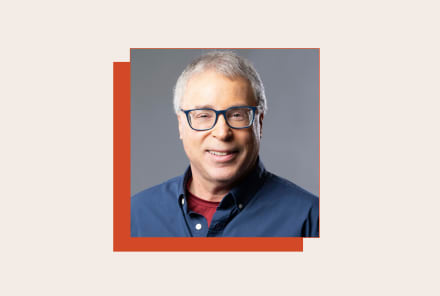Advertisement

As the director of the University of Southern California’s (USC) Longevity Institute and the mind behind the ProLon Fasting-Mimicking Diet, Dr. Valter Longo is one of the world’s premier experts on health and longevity. A biochemist by training, he studies the fundamental mechanisms of aging so we can truly understand what’s happening in the body—and how to slow it down. His new book, The Longevity Diet, aims to teach us all how to eat and live for a long, active life.
Most people are discouraged and often confused by nutritional news. Nutrient groups (fats, proteins, and carbohydrates), and also specific foods like eggs and coffee have all been described in scientific journals and the media as both good and bad for you. How do you decide what’s right for you and your health? In fact, proteins, fats, and carbohydrates can be considered both good and bad for you depending on type and consumption. For example, proteins are essential for normal function, yet high levels of proteins, and particularly those from red meat and other animal sources, have been associated with increased incidence of several diseases. So we need a better system to filter out the noise and extract beneficial dietary information.
This is why I formulated the "Five Pillars of Longevity." This method is based on my own studies and also on the studies of many other laboratories and clinicians. It uses five research areas to determine whether a nutrient or combination of nutrients is good or bad for health and to identify the ideal combination of foods for optimal longevity.
I believe that many popular strategies and diets are inappropriate or only partially correct because they are based on just one or two pillars. This is important because while one nutrient may be protective against one condition or disease, it can negatively affect another, or it can protect middle-age individuals but hurt the very young or the elderly. An example: In adults age 70 and below, eating a relatively high-calorie diet will in most cases lead to weight gain and an increase in the risk for developing certain diseases. Yet in individuals over age 70, the same diet and the consequent moderate weight gain can be protective against certain diseases and overall mortality. This is why it is important to follow the advice of someone who has an in-depth understanding of the complex relationship between nutrition, aging, and disease.
The Five Pillars of Longevity create a strong foundation for dietary recommendations and a filtering system to evaluate thousands of studies related to aging and disease while also minimizing the burden of dietary change. When dietary choices are based on all of the Five Pillars, they are unlikely to be contradicted or undergo major alterations as a consequence of new findings.
1. Basic research.
Without understanding how nutrients—such as proteins and sugars—affect cellular function, aging, age-dependent damage, and regeneration, it is difficult to determine the type and quantity of nutrients needed to optimize healthy longevity. Without animal studies to determine whether a diet can in fact extend longevity, in addition to having acute effects on general health, it is difficult to translate the basic discoveries to human interventions. As I mentioned earlier, I first started working with mice and humans in Walford’s lab, but I soon discovered that a far simpler unicellular organism, yeast, could help us identify the fundamental properties of organisms. These could then be applied to humans, furnishing information related to molecular aspects of longevity—in particular, the ones linked to evolutionary principles. Using yeast, we were able to generate the differential stress resistance and sensitization theories that served as the foundation for a number of clinical trials testing the effect of fasting-mimicking diets in combination with cancer therapies. This basic research is where every one of our studies begins.
2. Epidemiology.
This is the study of the causes and important risk factors for disease and other health-related conditions in defined populations. Studying population-based risk factors is crucial to testing hypotheses generated by basic research. For example, if you hypothesize that excess sugar promotes abdominal fat storage and resistance to insulin, epidemiological research should confirm that people who consume high quantities of sugars have a high waist circumference and an increased risk for diabetes. After my initial focus on the genetics of aging, I carried out epidemiological studies related to aging and diseases, which taught me the tremendous value of understanding the health consequences of behavior in large populations.

3. Clinical studies.
Hypotheses formulated in basic and epidemiological studies eventually must be tested in randomized, controlled clinical trials. This is the gold standard to demonstrate efficacy. For example, a group of prediabetic subjects would be instructed to consume fewer sugars but otherwise maintain the same diet and calorie intake as before. The control group would be asked to maintain the same diet or reduce the intake of fat to match the calorie reduction in the reduced-sugar group. Understanding the importance of this pillar grew out of my own randomized clinical trials, and those of many others, testing the effect of a particular dietary component on risk factors for disease, such as cholesterol or fasting glucose levels, but also on a disease itself, such as cardiovascular disease.
4. Centenarian studies.
Once the data from basic, epidemiological, and clinical studies is available, there is still uncertainty about whether a specific diet or nutritional intervention is in fact safe and beneficial after long-term use, and whether it is palatable enough for people not just to adopt it but to stick with it for the rest of their lives. Studies of various centenarian populations from around the world provide long-term evidence of the safety, efficacy, and compliance associated with a particular diet (for example, a low-sugar diet). To generate data for the fourth pillar, I have studied long-lived populations in Ecuador and southern Italy and consulted the work of my colleagues focusing on other very long-lived populations in high-longevity zones around the world.
5. Studies of complex systems.
This pillar is the result of my fascination with reductionism, physics, and the need to simplify the human body’s complexity by identifying complex machines that can serve as models to teach us about the function and loss of function of human organs and systems. This last pillar can complement the others by providing reference points and useful analogies. For example, above I discuss how sugars can lead to disease. But sugars are also the most important nutrient for the human body. Sugar is to the body what gasoline is to a car—the central source of energy. So sugars are not the problem. It’s the intake of excessive quantities of sugar, in combination with proteins and certain types of fats, that contributes to disease both directly and indirectly—by activating aging-related genes, creating insulin resistance, and triggering hyperglycemia. This last pillar furthers the analysis of a human problem by taking an engineering approach to generate a relatively simple model to understand the complex interactions between food, cellular damage, and aging.
Reprinted from The Longevity Diet by arrangement with Avery, a member of Penguin Group (USA) LLC, a Penguin Random House Company. Copyright © 2018, Valter Longo.
Watch Next
Enjoy some of our favorite clips from classes
Enjoy some of our favorite clips from classes
What Is Meditation?
Mindfulness/Spirituality | Light Watkins
Box Breathing
Mindfulness/Spirituality | Gwen Dittmar
What Breathwork Can Address
Mindfulness/Spirituality | Gwen Dittmar
The 8 Limbs of Yoga - What is Asana?
Yoga | Caley Alyssa
Two Standing Postures to Open Up Tight Hips
Yoga | Caley Alyssa
How Plants Can Optimize Athletic Performance
Nutrition | Rich Roll
What to Eat Before a Workout
Nutrition | Rich Roll
How Ayurveda Helps Us Navigate Modern Life
Nutrition | Sahara Rose
Messages About Love & Relationships
Love & Relationships | Esther Perel
Love Languages
Love & Relationships | Esther Perel


















